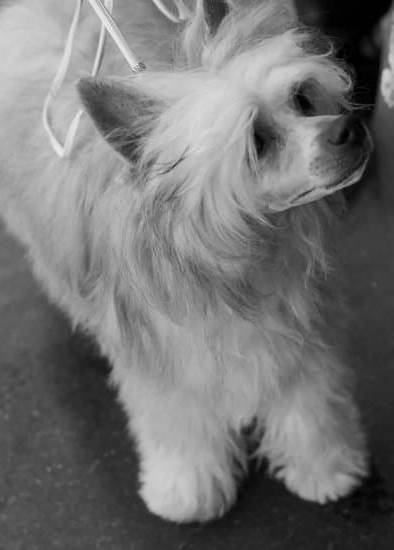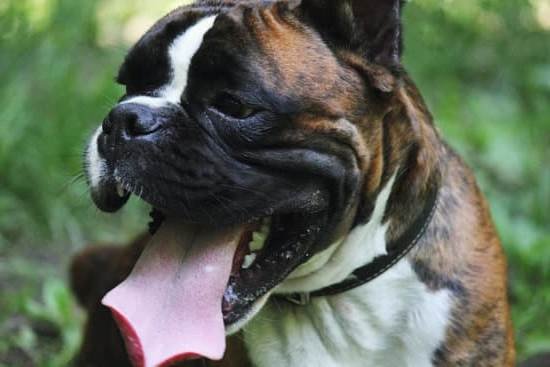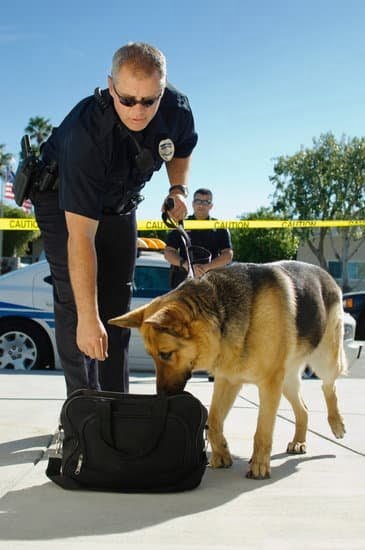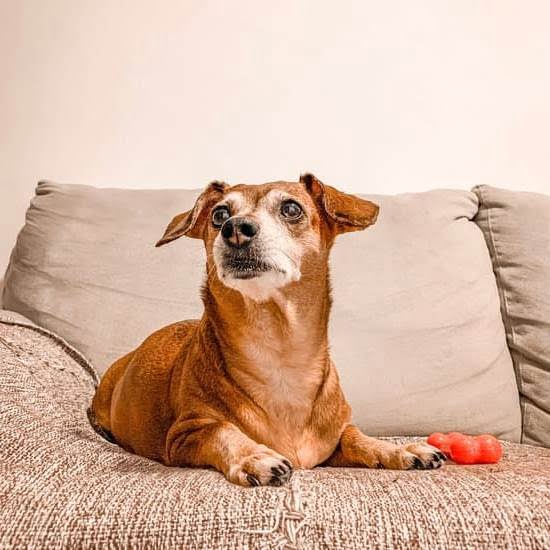The world of dog agility training is a thrilling and rewarding endeavor that can benefit both you and your furry friend. Agility training involves guiding your dog through a timed obstacle course, testing their speed, agility, and obedience skills. Not only is it an excellent form of physical exercise for your canine companion, but it also provides mental stimulation and strengthens the bond between you.
Agility training has become increasingly popular in recent years due to its many advantages. Not only does it keep dogs physically fit, but it also improves their coordination, confidence, focus, and overall behavior.
It provides an outlet for their natural energy and instincts while challenging them both mentally and physically. Additionally, participating in agility competitions or simply practicing the sport at home can be a fun way to spend quality time with your dog and engage in a stimulating activity together.
Before diving into the world of dog agility training, it’s important to gather the necessary equipment to set yourself up for success. Having the right tools will not only ensure safety during training sessions but will also help you effectively teach your dog each aspect of the course.
In this article, we will discuss the essential equipment needed for dog agility training, as well as delve into specific items such as jumps, weaving poles, tunnels, A-frames, pause tables, and more. Whether you are a beginner or an experienced handler, there are options available to suit different budgets and training levels.
By understanding what equipment is required for dog agility training upfront, you can fully prepare yourself for this exciting adventure with your four-legged companion. So let’s explore all the necessary gear in detail in order to create a safe and effective environment for your dog’s agility journey.
The Essential Equipment for Dog Agility Training
Dog agility training requires specific equipment to create a challenging and engaging environment for both the dog and handler. The essential equipment for dog agility training includes jumps, weaving poles, tunnels, A-frames and dog walks, pause tables, and miscellaneous equipment. Each of these items serves a specific purpose in building the skills and confidence necessary for successful agility training sessions.
- Jump: Jumps are one of the fundamental pieces of equipment in dog agility training. They help dogs build confidence, improve speed, and enhance their jumping technique. There are different types of jumps available, including tire jumps, panel jumps, and hurdle jumps. It is crucial to select an appropriate jump height based on your dog’s size and skill level to ensure their safety.
- Weaving Poles: Weaving poles play a crucial role in teaching dogs to navigate through a series of upright poles quickly and accurately. Dogs need to develop the ability to weave in and out of these poles without knocking them over or missing any. Different materials like PVC or metal can be used for weaving poles depending on your preference.
- Tunnel: Agility tunnels provide dogs with an exciting way to work on their navigation skills while introducing them to dark and enclosed spaces. There are different types of tunnels available such as closed or open-ended tunnels, collapsible tunnels for easy storage, or longer tunnels for more advanced training. It’s important to gradually introduce your dog to the tunnel using positive reinforcement techniques.
| Equipment | Purpose |
|---|---|
| Jump | Builds confidence and improves jumping technique |
| Weaving Poles | Teaches dogs how to weave in between upright poles |
| Tunnel | Introduces dogs to dark and enclosed spaces, improves navigation skills |
Having the essential equipment is crucial for starting dog agility training. These items provide the necessary foundation for teaching your dog various agility techniques and creating a stimulating training environment. It’s important to select equipment that suits your dog’s size, breed, and skill level to ensure safe and effective training sessions.
Agility Jumps
Agility jumps are an essential component of dog agility training. They not only help to build confidence in your dog but also improve their speed and overall performance on the course. In this section, we will explore the different types of jumps used in dog agility training, provide guidance on selecting the appropriate jump height for your dog, and offer tips for training your dog to clear jumps effectively.
There are several types of jumps commonly used in agility training, including bar jumps, tire jumps, panel jumps, and broad jumps. Bar jumps consist of a horizontal bar that can be adjusted to different heights. Tire jumps are circular hoops made of lightweight material that the dog must jump through.
Panel jumps have solid panels that the dog must clear without knocking them down. And broad jumps consist of a series of wooden planks set at increasing distances apart for the dog to jump over.
When determining the appropriate jump height for your dog, it’s important to consider their size, breed, and level of training. Small dogs typically jump lower heights compared to larger dogs. The height should be challenging enough to encourage your dog to stretch themselves but not so high that it becomes too difficult or unsafe.
Training your dog to clear jumps effectively requires patience and consistency. Start with low-heights and gradually increase as your dog becomes more comfortable and confident. Use positive reinforcement techniques like treats or praise to reward them for successfully clearing each jump. Additionally, it’s important to teach your dog proper jumping form by encouraging them to use their hind legs to propel themselves over the jump instead of relying solely on their front legs.
In summary, agility jumps are a vital part of building confidence and speed in your dog during agility training. Understanding the different types of jumps available, selecting appropriate heights for your dog’s skill level, and implementing effective training techniques can help enhance their performance on the course. With patience and consistent practice, your furry friend will become a skilled jumper and have a blast navigating the agility obstacles.
Weaving Poles
In dog agility training, weaving poles play a crucial role in teaching dogs to navigate obstacles with speed and precision. Weaving is a fundamental skill that requires dogs to move in a zigzag pattern through a set of poles.
This skill not only improves their agility but also enhances their coordination and focus. In this section, we will explore the significance of weaving poles in agility training, discuss different styles and materials used for weaving poles, and provide step-by-step training techniques to teach your dog to weave like a pro.
When it comes to weaving poles, there are various styles available on the market. The most common type is the open-frame style, where the poles are placed within individual baseplates. This design allows for easy adjustment of pole spacing and height, making it suitable for dogs of different sizes and training levels. Another popular style is the solid base style, where the poles are fixed onto a stable base. This style offers more stability but limits adjustability.
In addition to different styles, weaving poles can be made from various materials such as PVC pipes or metal rods. PVC pipes are lightweight and affordable, making them an excellent option for beginners or handlers with budget constraints. On the other hand, metal rods offer greater durability but tend to be more expensive.
Now that you understand the significance of weaving poles and have an idea of the different styles and materials available, let’s dive into some training techniques to teach your dog how to weave effectively:
- Introduce your dog slowly: Start by placing just two or three poles close together and gradually increase the distance as your dog becomes more comfortable.
- Use proper body positioning: Stand at an angle towards one side of the weave entry to guide your dog towards that direction.
- Use visual cues: Use hand signals or target sticks to help direct your dog through the weave poles.
- Reward progress: Lavishly praise and reward your dog for successfully navigating through the poles. Gradually reduce the frequency of treats as they become more proficient.
- Practice, practice, practice: Consistent and frequent practice is key to mastering weaving. Set aside regular training sessions to reinforce the skill and gradually increase the difficulty level.
By following these training techniques and investing in appropriate weaving poles, you can set your dog up for success in agility training. Remember to be patient, encourage progress, and always keep the training sessions fun and enjoyable for both you and your furry friend.
Agility Tunnels
Agility tunnels are a crucial component of dog agility training, as they test a dog’s speed, flexibility, and courage. These tunnels are long, narrow structures made of fabric or plastic and can have various shapes such as straight, curved, or U-shaped.
They simulate the dark and twisty spaces dogs may encounter in real-life agility courses. In this section, we will explore the purpose of agility tunnels, the different types available, and training strategies to help your dog conquer these challenging obstacles.
The Purpose of Agility Tunnels
Agility tunnels serve multiple purposes in dog training. Firstly, they help dogs build confidence in navigating enclosed spaces. The darkness and confinement within the tunnel can be intimidating for some dogs initially. By introducing them to an agility tunnel gradually and providing positive reinforcement, you can help them overcome any fears or hesitations they may have.
Additionally, agility tunnels improve a dog’s speed and agility. Dogs must sprint through the tunnel quickly while maintaining focus to exit at the other end accurately. This exercise enhances a dog’s speed, coordination, and reaction time.
Different Types of Tunnels
There are several types of agility tunnels available on the market. The most common ones include basic fabric tunnels, chute-style tunnels with closed ends for added difficulty, and collapsible or portable tunnels for convenience during training sessions or competitions.
Fabric tunnels are typically made from lightweight material like polyester or nylon. They come in different lengths and diameters but are generally wide enough for small to medium-sized dogs to comfortably pass through. Chute-style tunnels provide an extra challenge as they require dogs to push their way through a narrower opening before entering the main tunnel.
Collapsible or portable tunnels are designed for easy setup and storage. They usually consist of lightweight materials like wire frames wrapped with fabric covers. These types of tunnels come in various lengths and can be easily transported from one location to another, making them ideal for training sessions in different environments.
Training Strategies for Agility Tunnels
When introducing your dog to agility tunnels, it’s important to begin with short and straight tunnels. Gradually increase the level of difficulty as your dog becomes more comfortable. Start by luring or coaxing your dog through the tunnel using treats or toys as motivation. Praise and reward your dog each time they successfully navigate the tunnel.
To help build confidence, consider practicing with a partner. Have someone stand at the end of the tunnel, calling and encouraging your dog to come through. This method can provide a familiar and supportive presence that helps dogs feel more secure while navigating the dark passage.
It is crucial to monitor your dog closely during tunnel training to ensure their safety. Avoid pushing or forcing them through if they seem fearful or resistant. Patience and positive reinforcement are key in helping your dog conquer agility tunnels.
A-frames and Dog Walks
A-frames and dog walks are two common obstacles in dog agility training that require dogs to navigate high structures with stability and confidence. These obstacles test a dog’s balance, agility, and control while also challenging their problem-solving abilities. It is crucial for handlers to understand the construction of these obstacles, along with proper handling techniques and training protocols, in order to ensure a safe and successful training experience.
An A-frame is a large structure shaped like an upside-down letter “A,” with a steep incline on one side and a gradual decline on the other. This obstacle requires dogs to ascend the steep side, traverse the narrow peak, and descend the other side without losing their footing or balance. The height of an A-frame can vary depending on the size of the dogs participating in agility training.
It is important to note that safety considerations should be a top priority when using A-frames. Handlers must ensure that their dogs are properly trained before attempting this obstacle, as a fall from an improperly executed A-frame can cause injury.
Similarly, a dog walk consists of elevated platforms connected by narrow planks or ramps that dogs must traverse. The main difference between an A-frame and a dog walk is that dog walks have flat surfaces instead of inclines or declines.
Dogs must maintain their balance while walking across the planks or ramps without veering off course or falling off the sides. Safety precautions such as non-slip surfaces on the platforms and secure railings should be in place to prevent accidents.
When training your dog to navigate A-frames and dog walks, it is essential to start with low heights or lowered planks/ramps gradually increase difficulty as your dog gains confidence and proficiency. Positive reinforcement techniques such as treats, praise, or rewards can be used to motivate your dog during training sessions. Consistency, patience, and clear communication between handler and dog are key to ensuring success on these high obstacles.
| A-frames | Dog Walks |
|---|---|
| Large structure shaped like an upside-down “A” | Elevated platforms connected by narrow planks or ramps |
| Requires dogs to ascend, traverse, and descend without losing balance | Requires dogs to walk across the planks or ramps without veering off course or falling off |
| Safety considerations should be a priority, as falls can cause injury | Safety precautions such as non-slip surfaces and secure railings should be in place |
| Start with low heights or lowered planks/ramps and gradually increase difficulty | Start with low platform heights and gradually increase difficulty |
Pause Tables
In the world of dog agility training, pause tables play a crucial role in building focus and control in your furry friend. These tables are elevated platforms where dogs are trained to pause and wait for a specific period of time before moving on to the next obstacle. This not only helps dogs develop patience but also allows handlers to regain control and maintain a clear line of communication with their canine companions.
The purpose of pause tables in agility training is two-fold. Firstly, they provide a designated area for dogs to pause, which helps them develop impulse control and patience. This skill is vital during agility competitions when handlers need their dogs to take a momentary break before continuing with the course.
Secondly, pause tables allow handlers to regain focus and establish control over their dogs. By incorporating pauses into the training routine, handlers can ensure that their dogs are attentively listening to commands and following their lead.
There are different designs and materials used for pause tables in agility training. The most common design consists of a raised platform with sturdy legs, providing stability and support for the dog. Some tables feature rubberized surfaces for added traction, ensuring that dogs don’t slip or lose confidence while on the table. It’s important to select a table that is appropriate for the size and breed of your dog, as well as one that meets safety standards.
Teaching your dog to use the pause table effectively involves gradual progression and positive reinforcement. Start by getting your dog comfortable with stepping onto the table using verbal cues or treats as encouragement. Gradually increase the duration of the pause before rewarding your dog for staying still. Eventually, you can introduce distractions or additional commands while your dog remains on the table, further enhancing their focus and control.
Miscellaneous Equipment
Exploring Additional Equipment Options
In addition to the essential equipment discussed earlier, there are various miscellaneous items that can greatly enhance your dog’s agility training. These tools are designed to target specific skills and improve overall performance in agility. While not all of these items are necessary for every dog or training level, they can provide new challenges and add excitement to your training sessions.
Target Sticks: Precision Training and Control
Target sticks are a versatile tool used to teach dogs precision and control during agility exercises. They consist of a long stick with a small target at the end, typically a colored ball or a platform. By teaching your dog to touch the target with their nose or paw, you can guide them through intricate courses and refine their movements. Target sticks can be particularly helpful when teaching tight turns or directing your dog’s focus towards specific obstacles.
Hoops: Agility and Coordination
Hoop jumps are another valuable addition to any agility training setup. These lightweight, adjustable hoops provide an opportunity for dogs to practice jumping accuracy while improving their coordination skills. Hoops can be set at different heights depending on your dog’s abilities, gradually increasing the challenge as they become more proficient. Incorporating hoops into your training routine will encourage your dog to jump through them with enthusiasm, further enhancing their confidence and athleticism.
Tunnels: Advanced Training Techniques
Agility tunnels were briefly mentioned earlier in this article; they come in various shapes, sizes, and materials. However, there are additional tunnel variations that can take your dog’s training to the next level. Chute tunnels have a collapsed fabric that simulates narrower spaces – teaching dogs how to navigate tight areas. Additionally, flat tunnels have evenly distributed weight which ensures stability throughout the tunnel while requiring dogs to maintain speed during traversing.
These miscellaneous equipment options provide trainers with unique ways of challenging and expanding their dog’s agility training. By incorporating them into your routine, you can tailor exercises to address specific weaknesses or goals while adding variety to your training sessions.
Remember, when introducing new equipment to your dog, it’s important to start with simpler exercises to ensure they understand how to use each item properly. Gradually increase the difficulty level as they become more comfortable and confident. As always, positive reinforcement and patience are key components of successful training sessions.
By utilizing the essential equipment discussed earlier along with these additional tools, you can create a comprehensive and effective agility training setup for your furry friend. The combination of these training aids will help develop their physical abilities, mental focus, and overall performance on the agility course.
Safety Measures in Dog Agility Training
When it comes to dog agility training, safety should always be a top priority. This section will discuss the importance of creating a safe training environment for your dog, address potential hazards and common safety concerns, and provide information on appropriate safety gear for handlers and dogs during training.
Creating a safe training environment starts with ensuring that the area where you are conducting your agility training is free from any hazards or obstacles that could potentially cause harm to your dog. Remove any sharp objects, toxic plants, or other dangerous items from the training area. Additionally, make sure the space is secure and there are no escape routes for your dog.
Another key aspect of safety in dog agility training is the management of potential hazards. One common hazard in agility training is uneven surfaces or slippery flooring. It is important to train on surfaces that provide good traction and stability for the dogs to prevent slips and falls. It may be necessary to use rubber mats or non-slip materials to improve footing.
In terms of safety gear, it is important for handlers to wear appropriate attire during training sessions. This includes comfortable clothing that allows for freedom of movement, as well as closed-toe shoes that offer protection and support. Additionally, handlers should consider wearing protective gear such as knee pads or elbow pads if needed.
For dogs, it is crucial to have a well-fitted harness or collar that does not pose a risk of choking or injury during jumps or tight turns. Leashes should also be secure but not restrictive, allowing for freedom of movement while maintaining control over the dog. Some handlers may choose to use boots or paw protectors for their dogs when training on rough surfaces or in extreme weather conditions.
Conclusion
In conclusion, dog agility training is a fantastic way to provide mental and physical stimulation for your canine companion. By investing in the essential equipment discussed in this article, you can create a safe and exciting environment for both you and your dog. Remember, agility jumps, weaving poles, tunnels, A-frames and dog walks, pause tables, and miscellaneous equipment all play important roles in helping your dog develop the skills necessary to excel in agility training.
Before you embark on your agility training journey, take the time to assess your dog’s abilities and choose appropriate equipment that fits their size and skill level. It is important to start with smaller obstacles and gradually progress to more challenging ones as your dog becomes more confident and experienced. Throughout the training process, be patient with your furry friend and always use positive reinforcement techniques.
Additionally, keep in mind that safety is of paramount importance during agility training. Take precautions to create a safe training environment by clearing any potential hazards from the area where you will be practicing. Consider using safety gear such as harnesses or vests for both you and your dog. Stay alert, attentive, and ensure that proper technique is used when handling the equipment.
By following these guidelines and utilizing the knowledge gained from this article, you are well-equipped to begin your dog’s agility training journey. Embrace this adventure as an opportunity for growth and fun bonding experiences with your four-legged friend. Should you require further information or resources on specific aspects of agility training or equipment recommendations tailored to your dog’s needs, there are many online sources available for additional guidance. Happy training.
Frequently Asked Questions
What is in an agility kit?
An agility kit typically contains a variety of equipment designed to train dogs in agility. This can include items such as weave poles, jumps, tunnels, pause tables, and tire jumps.
The kit may also include cones or markers for setting up courses and training aids like clickers or treats to reward and reinforce the desired behaviors during training sessions. Agility kits offer a convenient way for dog owners to set up a small agility course at home and begin training their dogs in this fun and engaging sport.
How do I start agility training at home for my dog?
To start agility training at home for your dog, it is important to familiarize yourself with the basic principles of agility and understand the equipment and commands involved. Begin by introducing your dog to each piece of agility equipment gradually, allowing them to explore and get comfortable with it before attempting any training exercises. Use positive reinforcement techniques such as rewards, treats, or praise to motivate and encourage your dog during training sessions.
Start with simple exercises like guiding your dog through a tunnel or teaching them to jump over low hurdles. As your dog becomes more confident and comfortable with the obstacles, you can gradually increase the difficulty level and introduce more complex challenges.
What age should dogs start agility training?
The ideal age for dogs to start agility training can vary depending on factors such as breed, size, and individual development. Generally speaking, most dogs can begin preliminary agility training around one year old when they have finished growing physically but are still young enough to learn new skills easily. However, it is crucial to consult with a veterinarian before starting any intense physical activity like agility training to ensure that your dog’s bones and joints are fully developed and matured enough for such activities without risking injury or long-term damage.
Additionally, consider your dog’s temperament – some young puppies may not be mentally ready for intense focus required in agility until they are slightly older. Overall, it is important to balance both physical readiness and mental preparedness when determining the appropriate age for starting agility training with your dog.

Welcome to the blog! I am a professional dog trainer and have been working with dogs for many years. In this blog, I will be discussing various topics related to dog training, including tips, tricks, and advice. I hope you find this information helpful and informative. Thanks for reading!





